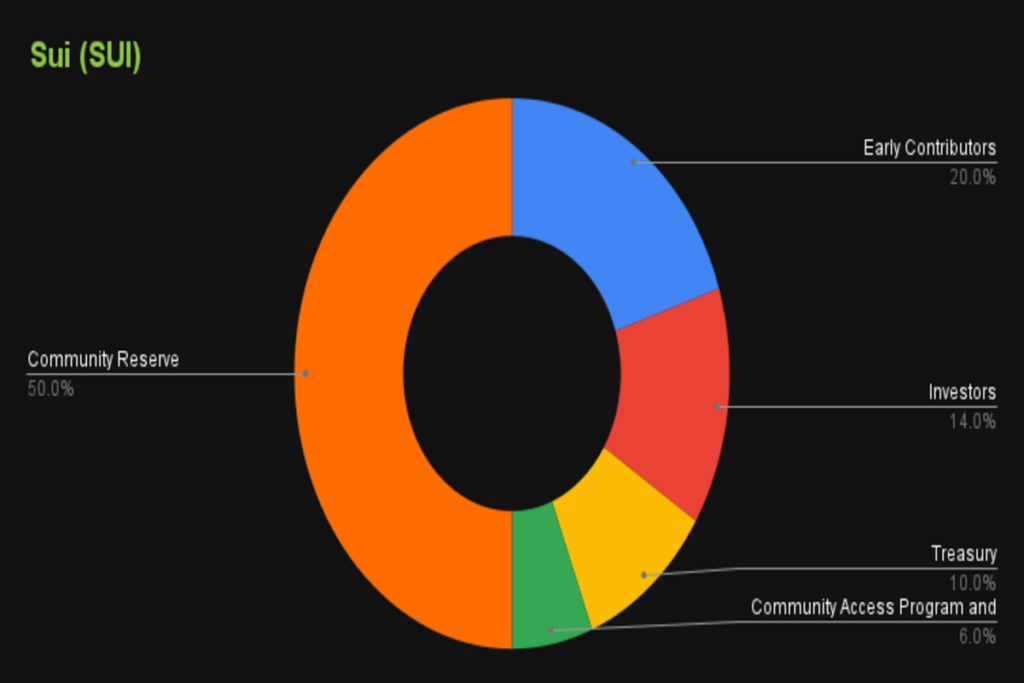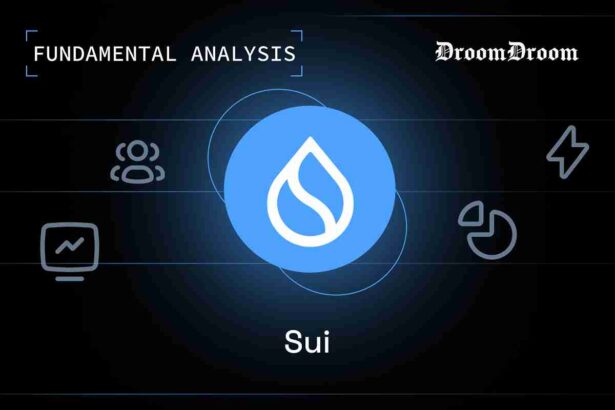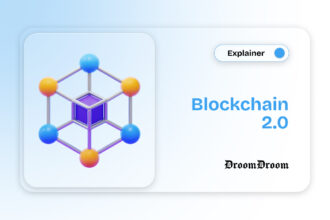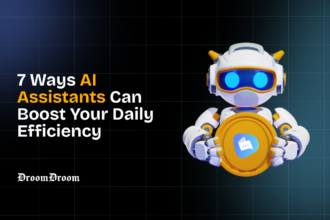SUI is the native token. The platform supports a Proof-of-Stake consensus mechanism. In other words, this means that you can stake your SUI. Furthermore, you can use SUI to pay for gas fees and use it for governance.
Sui(SUI) is a first-of-its-kind Layer 1 blockchain and smart contract platform designed from the bottom up to make digital asset ownership fast, private, secure, and accessible to everyone. Its object-centric model, based on the Move programming language, enables parallel execution, sub-second finality, and rich on-chain assets.
With horizontally scalable processing and storage, it supports a wide range of applications with unrivaled speed at low cost. It is a step-function advancement in blockchain and a platform on which creators and developers can build amazing, user-friendly experiences.
The Sui blockchain uses the native programming language MOVE to create apps. MOVE, which was created by Facebook’s Libra project and is based on RUST, is intended for parallel execution.
The consensus method used in the this blockchain is the Narwhal-Tusk, isolates the transaction consensus process from data transmission. Consequently, the Mempool consensus issue in conventional blockchain models like Ethereum & Bitcoin is resolved.
Based on the aforementioned two innovations, this blockchain enables the network to grow horizontally, allowing it to accommodate millions of transactions per second without the need for specialized nodes (which are limited to older technology because they need to be configured with a sophisticated configuration to process more transactions and faster, which costs a lot of money in hardware).
Team Members and Background
The team behind its creation has one of the most renowned names in the cryptocurrency space. While the numbers of the team are not somehow vast, currently, the 5 co-founders have incredible experience from the past. Novi had been developed as one of the leading digital wallets, however, it was unsuccessful, which led to these 5 team members co-founding a new project called Sui.
Evan Cheng, Adeniyi Abiodun, Sam Blackshear, George Danezis and Kostas Chalkias co-founded Sui. They are co-founders and are former senior leaders of Facebook’s (Meta) advanced blockchain research and development organization. They were responsible for delivering some of the most advanced open source components such as the programming language, execution engine and cryptography of the Diem network.

Prior to Sui, they were responsible for creating and delivering some of the most advanced open-source components such as execution engine, programming language or cryptography of Diem (Novi) network.
Sui is built by Mysten Labs, one of the two spinoffs that came from Meta’s Diem project–the second being none other than so-called Solana Killer, Aptos Labs which launched its mainnet in October. Leading up to its launch, Sui has raised enormous amounts of money.
📣We’re excited to share that Mainnet will officially launch on May 3, 2023! pic.twitter.com/0jExi7gOka
— Sui (@SuiNetwork) April 19, 2023By September last year, Mysten Labs had closed a $300 million Series B round and reached a $2 billion valuation, according to CrunchBase.
The team behind Sui has said it wants the network to become the premier NFT and gaming platform for the cryptocurrency industry, by virtue of its Move programming language, which developers have said is a more intuitive way to write smart contracts. You can read here to understand what NFT’s are and how to buy them.
Tokenomics of SUI
Distribution
At the time of writing it has a Circulating Supply 528,273,718, and a Max Supply 10,000,000,000(10 billion) with a Fully Diluted Valuation of $9,807,017,482.

The allocation of Sui is designed to ensure the participation and support of various stakeholders: 14.00% is dedicated to Investors, who contribute to the growth and development of the project; 50.00% is allocated to the Community Reserve, fostering a strong and engaged community; 20.00% is set aside for Early Contributors, recognizing their valuable contributions during the initial stages; additionally, 6.00% is allocated to the Community Access Program and App Testers, ensuring the involvement and feedback of users; and finally, 10.00% is allocated to the Treasury, providing resources for future endeavors and maintaining financial stability.
This thoughtful distribution plan aims to create a sustainable ecosystem where each stakeholder plays a crucial role in its success.
Use Cases
Sui is a permissionless, PoS-powered, layer 1 blockchain that aims to provide instant settlement and high throughput while enabling a wide range of extreme next-generation decentralized applications. Flexible, sensitive to high latency. It allows developers to create Web3 projects that will serve the expected huge wave of Web3 users.
According to Evan Cheng (Mysten Co-Founder and CEO), Web3 is currently in a dial-up phase where processes are slow, expensive, insecure, and difficult to build. That’s why it launched with the goal of eliminating middlemen and allowing users to seamlessly integrate and interact with their favorite products across apps.
Competition
With a major focus on providing fast throughput and strong security for smart contracts created using the Move programming language, Aptos is an innovative public blockchain (proof of stake) created by former Facebook workers. Read here to understand more about proof of stake and proof of work differ.
Like AptosLabs, Sui’s Mysten Labs was established by a former staff from Meta’s Novi Research division. It is a high-performance L1 PoS chain that is focused on scaling dynamic and composable NFTs for a variety of metaverse applications, including gaming, social, commerce, and other areas.
Sui and Aptos, however, share a lot of basic and surface similarities. Here are a handful of these variations.
Scalability generally. Notably, neither chain strives for large-scale decentralization or the home validator scenario, but rather for “maximizing network capacity” (i.e., like Solana). State expansion is most likely the constraint.
Programming language: Sui has a slightly different object model than Aptos, despite the fact that they both employ their own variation of the Move programming language for parallel execution. In contrast to Aptos, Sui’s Move makes it explicit when an item is owned, shared, or changeable or immutable. Sui’s ownership API is also more streamlined than Aptos’ since it more openly exposes the blockchain’s architecture.
Sui’s architecture makes use of the Tusk consensus algorithm and a DAG-based mempool called Narwhal. The execution layer then parallelism using the DAG. While this is going on, Aptos accomplishes parallelization through the use of BlockSTM, a development of the high-performance HotStuff algorithm (which draws its inspiration from Software Transactional Memory), to dynamically identify dependencies and schedule execution activities.
Future of the Project
Being one of the newest Layer 1 blockchains to debut and compete with Ethereum’s dominance, and traders have been salivating over it. Investors are optimistic about the project because it offers on-chain data storage, parallel scalability for quick and inexpensive transactions, and proof-of-stake security validation. By appealing to developers and offering a growth-oriented home for play-to-earn games, metaverse development, DeFi, and other things, it hopes to displace Ethereum as the market leader.
It’s too soon to speculate about Sui’s potential future course. After such a spectacular introduction, the price of Sui looks to be in a consolidation period, which is usual.
Drawback and Weaknesses
All-around User Adoption
It still has a ways to go in persuading builders and degens to utilize its chain, much as Sui’s difficulty in onboarding additional developers.
The users are presently accustomed to competitive L1 blockchains. Sui is also a new blockchain, therefore projects must verify its popularity and security.
Poor TPS
Sui promises to have reduced latency and higher throughput, although these goals have not yet been met. The TPS for Sui was three as of May 17th, 2023. When compared to other blockchains, which process hundreds of transactions every second, this is incredibly slow.
Conclusion
Sui has a fantastic staff with a tremendous background and depth of knowledge. Sui has all the makings of a successful and significant cryptocurrency enterprise, with a sizable investor and venture capital support and a very reasonable value of $2 billion.
Sui is simply set to become the next significant cryptocurrency, barring a catastrophic failure in the project’s development or deployment. As confidence in Sui grows, it is anticipated that this project will easily move up to the top 50, if not top 10, in the near future.




















